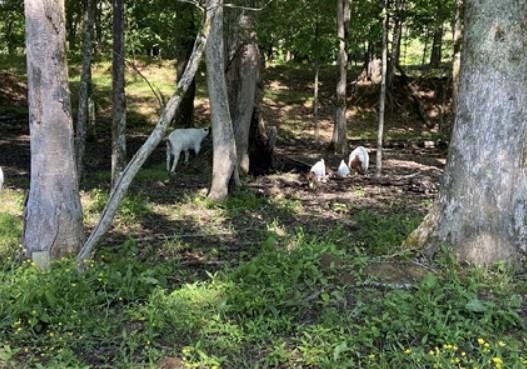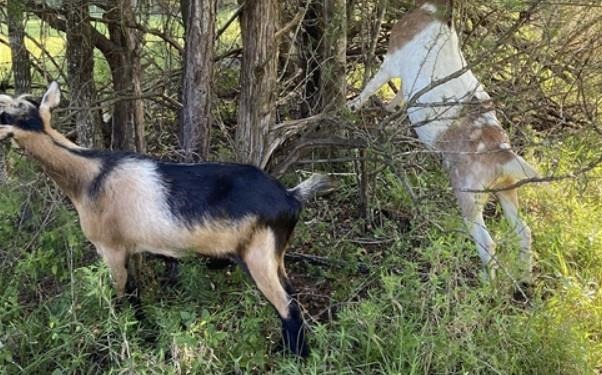
Figure 1. Panoramic view of grasses and woods in Oktibbeha County, Mississippi.
Introduction
A silvopasture is a sustainable agroforestry practice (Angima 2009) in which trees, forages, and livestock are integrated into one cohesive system. Combining these three components to create a silvopasture optimizes the production of each enterprise and maximizes effective land use while generating income in the short and long term (Smith et al. 2022). Silvopastures have been practiced in the Southeast since the 1950s, and their potential to benefit timber, forage, and livestock production systems is vast. The benefits of implementing silvopasture in the Southeast have been identified through research in recent years.
Without the presence of all three components, the land in question cannot be classified as a silvopasture. For example, if livestock is simply grazed in noncultivated timberland, this would be considered woodland grazing, not a silvopasture.
Components of a Silvopasture System
Trees
Coniferous trees have been successfully used in silvopasture. There are a few factors that should influence the choice of trees to use in a silvopasture. The land’s ecology, tree growth stage, availability of labor, livestock to be used, and goal of tree production (such as heat-stress relief for animals or pine by-products and commodities) must be considered when creating and/or managing a silvopasture. Here are some specific trees that have shown to benefit and integrate well into silvopasture in the Southeast:
- Longleaf pine (Pinus palustris)
- Loblolly pine (Pinus taeda)
- Slash pine (Pinus elliottii)
Because a silvopasture requires the presence of livestock, the trees significantly benefit from the grazing animals’ ability to dispose of any understory vegetation (any plants up to 3 feet tall) that is detrimental to the health and growth rate of trees, including pine trees. Three species commonly found as understory vegetation in Southeast pine forests include blackberry (Rubus L.), greenbrier (Smilax L.), and yaupon (Ilex vomitoria Aiton) (Karki et al. 2022). Pine producers must mitigate understory vegetation growth, and one of the most popular methods to achieve this goal is prescribed burning. While effective, burning the understory vegetation in pine forests has become more harshly regulated and restricted by federal and local officials and requires a burn permit. One of the ways timber producers can manage understory vegetation without burning is by integrating a silvopasture system with the use of livestock that will consume the problematic brush. A research study in 2016 found that a herd of Kiko goats consumed 50 to 75 percent of all understory vegetation in a pine forest (Khatri et al., 2016). By implementing grazing with small ruminants to create a silvopasture, you allow trees to thrive without excess understory vegetation negatively affecting their nutrient uptake and growth rate.
Livestock
Many livestock species, such as turkeys, pigs, sheep, goats, and cattle, have been integrated into research, depending on the species composition of the silvopasture system (Smith et al. 2022). Small ruminants (sheep and goats) have demonstrated tremendous potential for use in silvopasture. Kiko goats, Katahdin sheep, Holstein dairy cattle, and Angus beef cattle are just a few species that have been integrated into silvopasture research in the Southeast (Karki et al. 2022). Grazing animals, especially small ruminants, consume the forest understory vegetation that would otherwise choke out the pine trees and lower their growth rate. Not only do the trees benefit from the livestock, but the livestock benefit from what the trees provide as well. The shade from the trees serves as a relief from the heat, protects animals from the cold/wind chill, and keeps the ground cooler than an open/conventional pasture. Climatic stress can cause livestock to experience a reduction in comfort, meat yield, and milk yield. Heat or cold stress also can negatively affect livestock reproduction. In Brazil, researchers (Penteado-dos Santos et al. 2021) found that sheep grazed in a silvopasture experienced lower values in the following variables, in comparison to the sheep grazing in an open pasture:
- Respiration rate
- Heart rate
- Rectal temperature
- Body surface temperature
Heat stress is one of the most prevalent problems in animal agriculture in the Southeast. Through the use of trees, livestock producers can mitigate heat stress to ensure the animals’ well-being for a productive herd. Shade and improved temperatures impact positively on the animals in this system. Also, there is an extra benefit of having small ruminants browsing in woods: prevention of fires. Therefore, this practice has a positive effect on the environment and on the human population living near forest regions (Whelan 2022).
Forages
The component that separates a silvopasture grazing system from woodland grazing is the intentional presence of desirable forages. According to Karki (2010), some of these forages include the following:
- White clover (Trifolium repens)
- Bahiagrass (Paspalum notatum)
- Annual ryegrass (Lolium multiflorum)
- Tall fescue (Schedonorus arundinaceus)
- Hairy vetch (Vicia villosa)
- Sericea lespedeza (Lespedeza cuneata)
Selecting the right forages for a specific silvopasture is important for the success and longevity of the system. Shade tolerance, growing season, palatability based on livestock, and required nutrient content all must be considered. With proper selection and management of the forages, livestock will be able to achieve desirable gains. These forages benefit both the trees and the livestock. Nitrogen-fixing legumes (white clover, hairy vetch, and sericea lespedeza) replenish the nitrogen content of the soil, fostering an ideal soil environment for the trees. Livestock will benefit from the anthelmintic properties (destructive to parasitic intestinal worms) of sericea lespedeza, as well as the nutritional quality of bahiagrass and annual ryegrass. These forages all grow adequately in the Southeast and are common grazing forages that can easily be adapted into a silvopasture. For forages to persist in a silvopasture system, it is important to have good tree spacing to allow light penetration.
Silvopasture in the Southeast
The Southeast is recognized as a preferred region to support a silvopasture management system because of the region’s extensive timber industry. Much of the total land cover of the region is accounted for by forest-use lands. The Southeast is the largest timber-producing region of the United States, accounting for nearly 62 percent of all timber harvest (USDA Forest Service 2020). In 2021, for the 6th year in a row, Georgia was the number-one forestry state in the nation. Animal agriculture and raising livestock is also highly popular in the Southeast. Both timber and livestock producers alike rely on newfound ways to increase the revenue generated by their chosen enterprises. Table 1 shows the number of acres of forests for the most important states in the U.S., showing the high potential silvopasture has in this region.
Common pine trees in the Southeast, mainly the loblolly and longleaf pines, can take 40 to 60 years to reach a full mature harvesting height of 100 to 120 feet. A study done at Tuskegee University (Karki et al. 2022) found that soils under silvopastoral systems had more nitrogen (78 percent) and carbon (12 percent) in comparison to soils from traditional forest systems. In addition, pine trees grew 4 to 5 percent taller and had 35 to 78 percent more basal diameter than trees under traditional systems. Altogether, this study supports the potential of silvopasture systems for the betterment of the timber industry and agriculture industry in the Southeast.
Table 1. Southeastern states with a large number of acres of forest in 2022.
State | Acres of forest | Percent of total land cover |
Georgia | 24,464,219 | 65 |
Alabama | 23,093,931 | 69 |
Mississippi | 19,204,328 | 60 |
North Carolina | 18,750,217 | 56 |
Florida | 16,970,464 | 44 |
Tennessee | 13,881,540 | 51 |
South Carolina | 12,857,041 | 64 |
Source: USDA 2022

Figure 2. Goats foraging under a traditional forest system in Union County, Mississippi.

Figure 3. Goats browsing in Oktibbeha County, Mississippi.
Source : msstate.edu